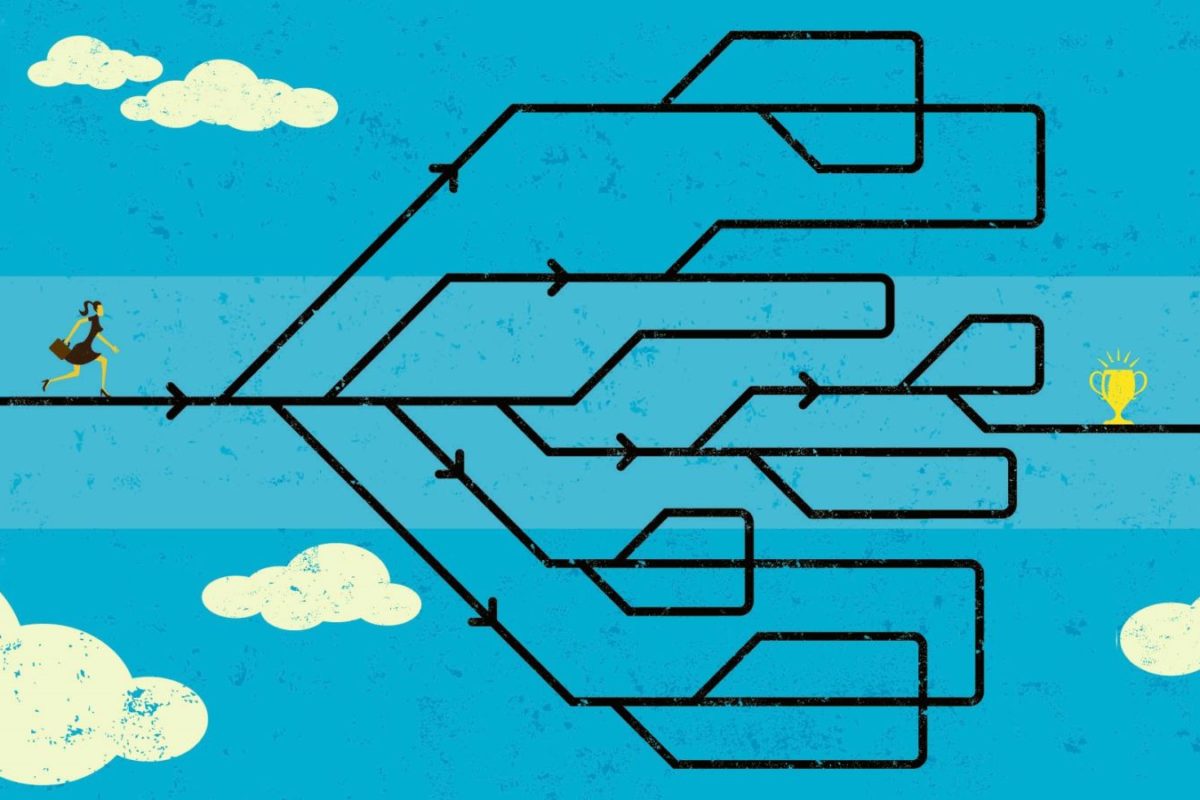
About Are
In the next of our articles on applying strengths in the workplace, we look at working together:
What does collaboration mean to you?
For many of us, it comes in the form of sitting in meeting rooms talking about things that are unnecessary or irrelevant, potentially with the wrong people. Or shouting questions across an open plan office (a bad habit of mine!). But I’m pushing for a different concept of collaboration – one that draws on the best of each person and leaves everyone feeling valued and happy. That is, strengths-based collaboration.
Everyone has strengths: things they love doing and are great at; and when we recognise what these are and enable people to spend more time doing these things, we boost their wellbeing and results. Although it may seem obvious, the reality is that most people don’t take the time or effort to collaborate intelligently.
I believe that this comes from a combination of two things: being too busy to be thoughtful about the delegation of each task; and our mirror-imaging bias – the belief that others view things through the same lenses and viewpoints as us, and therefore love and despise the same tasks as us. The reality, of course, is that teams are made up of people with different personalities and strengths, who enjoy and thrive doing a range of different tasks.
So, here are three simple steps to build more intelligent and positive collaboration in your teams:
1. Discover your strengths, and the strengths of the people around you (check out how you can do this here)
2. Review work currently going on (or coming up), and agree how to collaboratively manage it to play to peoples strengths, skills and experience as much as possible
3. Empower every person to be confident in calling out opportunities where the team are/aren’t playing to strengths, creating accountability and sustainability
Playing to our strengths allows us to get into flow more easily, perform better and enjoy our work more. It is also clear that the best performing managers align talents with projects and emphasise strengths over seniority when moving and managing talent2 (read my last article for more on this). By understanding the strengths of the people around us, we can delegate work more intelligently, weighing up skills, knowledge and strengths to get the best result whilst boosting motivation and happiness.
To help individuals and organisations use their strengths most effectively, we’ve developed a series of six 45-minute workshops teaching people how to apply them in different workplace scenarios – find out more here.
Happy collaborating 😊
2 Clifton & Harter, 2003


About How
Next up in our series of articles exploring the application of strengths, we look at growth and learning:
How would you rate the statement: “I have the opportunity to grow and develop in my role”?
This leads us to the even more important question of what ‘growth’ and ‘development’ mean to us. Traditionally, and perhaps still for a lot of people, this means vertical progression. Moving up the ranks of corporate hierarchy with a job title reflecting seniority. However, the reality is that this type of vertical progression is not right or realistic for everyone all the time.
What if you love your organisation and don’t want to leave, but there are no upward opportunities available?
What if that ‘next’ role just isn’t for you because, come to think of it, you don’t want to be a manager or take on the type of role or responsibility that comes with it?
I think it is safe to say that people are more frequently veering from this traditional route of career progression, opting for different opportunities to grow and develop themselves. A recent survey suggests that, on average, Millennials (people born in the broad timeframe from the late 70s to 00s) expect to change jobs more than every three years, making career changes 15-20 times in a lifetime. In line with this desire for non-linear growth, I wanted to share some great ideas to consider in terms of how we can stretch ourselves, find more meaning and satisfaction, and be at our best both within our current roles/organisations and outside.
As we think through the below ideas, it’s worth considering not just the knowledge and skills required, but what our core strengths are, and how we can play to them. Some ideas are…
• Develop ‘mastery’ in your role, or an aspect of it (see more on this here)
• Mentor others
• Bring variety into your role by collaborating with other departments on projects
• Gain knowledge, skills and experience outside your organisation – i.e. through volunteering, qualifications, courses or a side project
• Identify an opportunity to carve out a new role
• Move across into a different area of the business
• Broaden your horizons to other companies and industries
Understanding and prioritising our growth and development in line with our strengths and interests is the most important thing, as this defines whether intrinsically we will be happy, engaged and able to be our best in our future work. This is because being able to use our strengths for more hours each day leads to greater happiness, optimism, gratitude, performance, and meaning, and lower stress, sadness, depression and anxiety2.
So, my challenge to you is this: when thinking about your career growth over the next day, week, month or year, first-and-foremost figure out ‘what are my strengths?’. Once you know your strengths, stretch and challenge yourself by playing to them in ways that allow you to be at your best and be happy.
To help individuals and organisations use their strengths most effectively, we’ve developed a series of six 45-minute workshops teaching people how to apply them in different workplace scenarios – find out more here.
1 2012 Future Workplace LLC, http://futureworkplace.com
2 Asplund, J. 2012; Harzer & Ruch 2012; Kashdan, Julian, Merritt, & Uswatte, 2006; Steen, Seligman, Peterson, & Park 2005


About Three
In the next of our series of articles exploring the application of strengths, we look at goal-setting:
It’s that time of year when our thoughts are turning to reflection: Did we hit our KPIs? Did things go as we expected? And did we achieve the things we wanted to, both inside and outside work?
Hot on the heels of this contemplation – or, most often, in parallel – we’re also looking forward. In our non-work lives that means new year’s resolutions, frequently broken within a few weeks of grim January days. In our organisations, we try for something with more longevity, but they can end up being a bit ‘flat’. How can we make them really motivating instead?
Ensure your goals serve your role
It sounds silly, but make sure your goals are relevant to your role. A good starting point is to write down in just one sentence what your job is – it’s much harder than it sounds, and can be a useful indicator of how much clarity you have over what you’re in post to achieve. Avoid being drawn into goals that don’t serve your role – and look at redefining your role if the things you need to get done don’t seem to fit.
Align your goals with your strengths
By drawing your strengths into your goals, you make them much more inspiring. For example, if I had a strength around supporting others, I might choose to set goals around working collaboratively, learning new skills in order to share colleagues’ tasks, or simply ‘helping’ my organisation. Even the words you choose can make your goals more motivating.
Make your goals SMART+
We’ve all heard of SMART goals, but we can push them further. By making them challenging and positive, as well as SMART, we make them more energising. Rather than ‘Reduce call waiting times on the helpline by 10% by the end of the year’, we might go for ‘Create a great online help resource by June, so that clients can access support more efficiently’. The outcomes are the same – less pressure on the helpline and happier customers – but by making a positive and challenging solution part of the goal it becomes much more driven.
To help individuals and organisations use their strengths most effectively, we’ve developed a series of six 45-minute workshops teaching people how to apply them in different workplace scenarios, such as goal setting – find out more here.
Over the next two weeks, we’ll be posting articles exploring each of these scenarios from a theoretical, business or personal perspective.


About Being
In the second of our series of articles exploring strengths application in the workplace, Grace Walsh (one of the Bailey & French team) shares a personal story illustrating the difference between weaknesses and overplayed strengths, and how both impact performance:
Some years ago now, before Bailey & French, one workshop to this day sticks out in my mind, as an example of how our behaviour can negatively impact the people around us and how a lack of awareness can be our potential demise.
It was with a senior leader – we’ll call him ‘Andy’ – and his immediate team. In the session we were exploring the concept of strengths, where we asked everyone to identify five strengths and talk more about this strength and how they use it in their work. Some people were tentative in identifying their strengths, taking time to mull over the strengths cards on the table. Andy was quick off the mark to identify his strengths and was the first to be vocal about how he used them and how his strengths had brought him success in their career.
Andy identified ‘Creative’, ‘Curious’, ‘Flexible’, ‘Confident’ and ‘Spontaneous’. The company was a successful, growing marketing and communications business. He spoke fluidly about how being spontaneous and flexible enabled him to adapt and change direction, and ebb and flow with industry trends and client needs. During this time, I noticed the rest of the team quiet and reserved. They didn’t respond to what he was saying or engage with and confirm his thoughts, but merely nodded their heads in agreement when he caught their eye.
We then moved on to exploring and identifying which strengths we can overplay and how that behaviour comes across to others. At this stage, Andy was resolute: he felt he didn’t overplay any of his strengths. He could only see them as such, strengths, and couldn’t give an example of when he had, even once, overplayed any of them. Others in the team were reflective and good conversations formed around the table about not only their effective use of strengths, but also the ones, at times, they overplay.
After the session, when most had left the room, Andy’s assistant came to me and said how working with Andy was becoming more and more difficult and that the company was going through a really challenging time. She said that Andy was constantly changing his mind and that his impulsiveness was causing huge stress and strain, as others in the team were running around after him, picking up the pieces. They already had people leaving the team and in many ways his behaviour was impacting the business negatively.
She continued to say that although everyone respected Andy, and that his strengths (he genuinely was creative, adaptable and confident), had won them initial success. He took risks when they needed to at the beginning to make a name in their industry, when the business was a in a different place and needed a different approach. But today, everyone could see the negative impact his behaviour had on other people, though due to his lack of awareness and over confidence he was not able see this.
This situation reveals the importance of understanding our ‘overplayed strengths’. Andy had used his strengths to bring him and his colleagues success. He was able to sell the vision and people in his team had been inspired by his confidence and his willingness to embrace risks. However, because he couldn’t ‘dial down’ his strengths use, his behaviour became increasingly problematic. I later found out that the company unfortunately continued to flounder and eventually the business closed.
There are distinct differences between an overplayed strength and a weakness. A strength is something we love doing and our energised by. We can often be less tuned in to the potential of this being overplayed, or used badly, because it is part of who we are and we love doing it, so why would we not try use it as much as we can? Weaknesses, on the other hand, are often something we are naturally more aware of, because we don’t enjoy using them – it feels difficult and after we’ve used weaknesses we feel drained of energy.
We can learn to use our strengths better, at the appropriate time and being cognisant of the impact of our behaviour on other people. For example, using humour in a meeting can be a great way to put people at ease, specifically in a potentially tense situation. It relaxes people and, and laughing creates positive emotions which, the research now shows, can help enhance our cognitive ability. And yes, humour is a strength! However, if that humour is overplayed and used in too many contexts and inappropriately, it can come across that we are frivolous and unprofessional.
One way to build awareness is to seek feedback from colleagues and friends. The most successful and emotionally intelligent people I’ve worked with and coached look and ask for feedback regularly – feedback is viewed as an opportunity to learn and grow. It is welcomed. With the situation above, Andy didn’t look for feedback. In the workshop, it would have been a great opportunity to ask if other people had examples of when his strength overplayed. However, he didn’t ask and the more he continued to talk only about the upside of his strength the more unlikely people around him were comfortable in saying anything different. And, when challenged, it was unfortunately met with resistance.
To help organisations build awareness around strengths and how to apply that knowledge most effectively, we’ve developed a series of six 45-minute workshops. Click here for the range of workshops. Held via an online learning platform, team members can dial in from wherever they are, making the sessions scalable and accessible across multiple sites. Simple and practical, they are designed to be both enjoyable and highly relevant to day-to-day life – helping the learning to stick.
Over the next two weeks, we’ll be posting articles every day, exploring each of these areas from a theoretical, business or personal perspective. Follow us on LinkedIn to make sure you don’t miss them, and for more information drop us an email or give us a call on 01273 830830.
